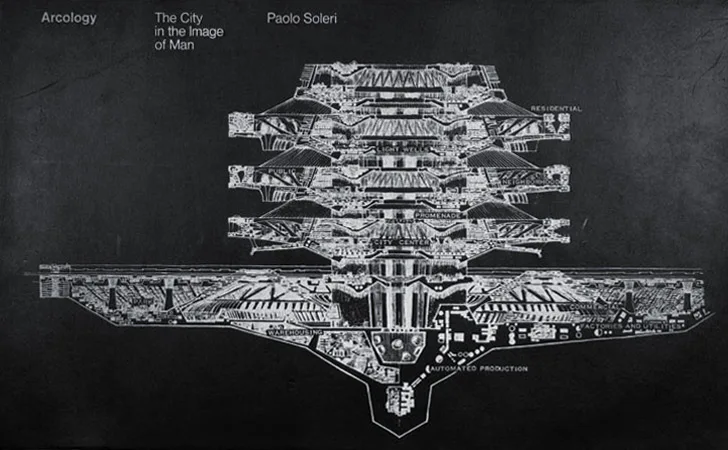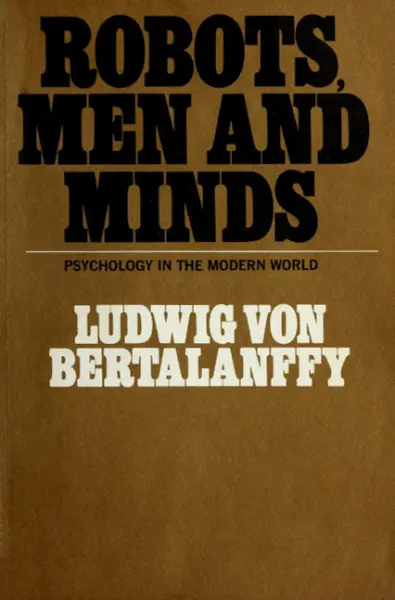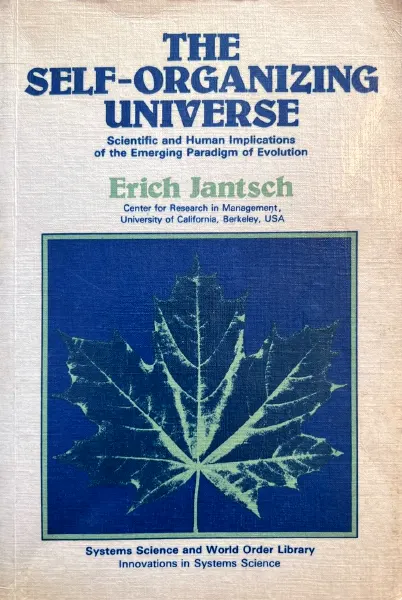The Library of Consciousness
of Consciousness

Arcology
Visionary architect Paolo Soleri challenges us to think of cities as biological entities with his concept of the arcology—a massive, self-sustaining, urban “organism of a thousand minds” designed to exist in harmony with nature. He proposes that the purpose of life is aesthetogenesis: the universe progressively complexifying itself into compassionate, beautiful structures. Soleri showcases 30 potential arcologies through incredibly detailed diagrams, explaining how each integrates itself economically and ecologically into the world and fulfills his aesthetogenic criteria. The scope of his vision ranges from cities designed to span canyons or float on the oceans to cube-shaped metropolises suspended on pillars, and even a space habitat. While comprehensive, Soleri's focus lies primarily on realizing arcologies that meet humanity's moral imperative for sustainable urban living.
Order Through Fluctuation
A thorough mathematical analysis of the spontaneous arising of new order in a fluctuating system, and how insights from dissipative chemical systems may be applied to large-scale social contexts.

Robots, Men, and Minds
Based on lectures delivered as The Inaugural Lectures in The Heinz Werner Lecture Series at Clark University (Worcester, Mass.) in January 1966, the book introduces new conceptions of humans and their world. After discussing the advantages and drawbacks of humanity's propensity for the symbolic construction of reality, it focuses on the systems approach to an understanding of the species. The author warns against the common error of identifying cybernetics with general systems theory. No matter how complex the cybernetic system, it "can always be resolved into feedback circuits" and thought of in terms of "linear causality." The regulative behavior of general systems is determined by goal-directed, dynamic interaction between many forces and variables in an open system. Bertalanffy points out that "no comprehensive theory of systems exists today." As a model, however, the approach has many advantages, such as obviating the need for the "ghost in the machine" and suggesting some solutions to the mind-body problem.

The Self-Organizing Universe
The evolution of the universe—ranging from cosmic and biological to sociocultural evolution—is viewed in terms of the unifying paradigm of self-organization. The contours of this paradigm emerge from the synthesis of a number of important concepts, and provide a scientific foundation to a new world-view which emphasizes process over structure, nonequilibrium over equilibrium, evolution over permanency, and individual creativity over collective stabilization. The book, with its emphasis on the interaction of microstructures with the entire biosphere, ecosystems etc., and on how micro- and macrocosmos mutually create the conditions for their further evolution, provides a comprehensive framework for a deeper understanding of human creativity in a time of transition.